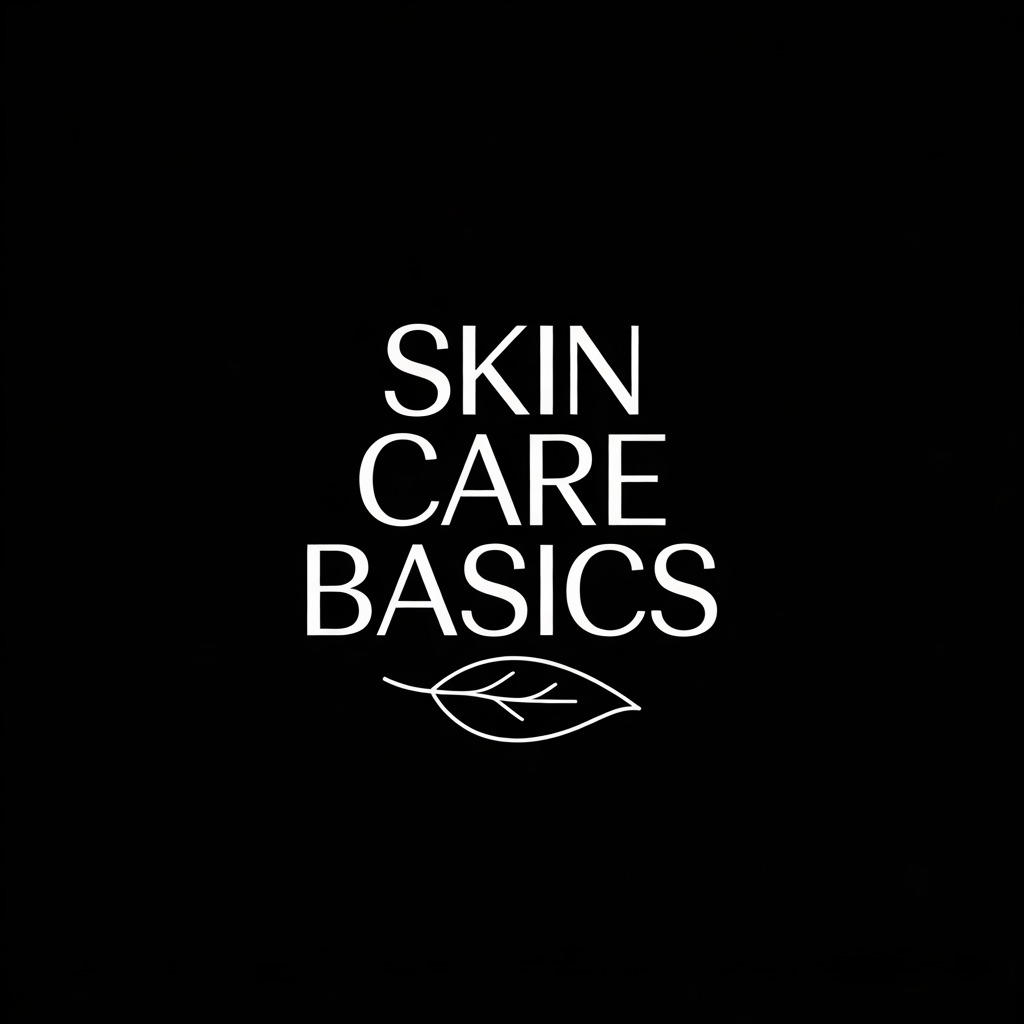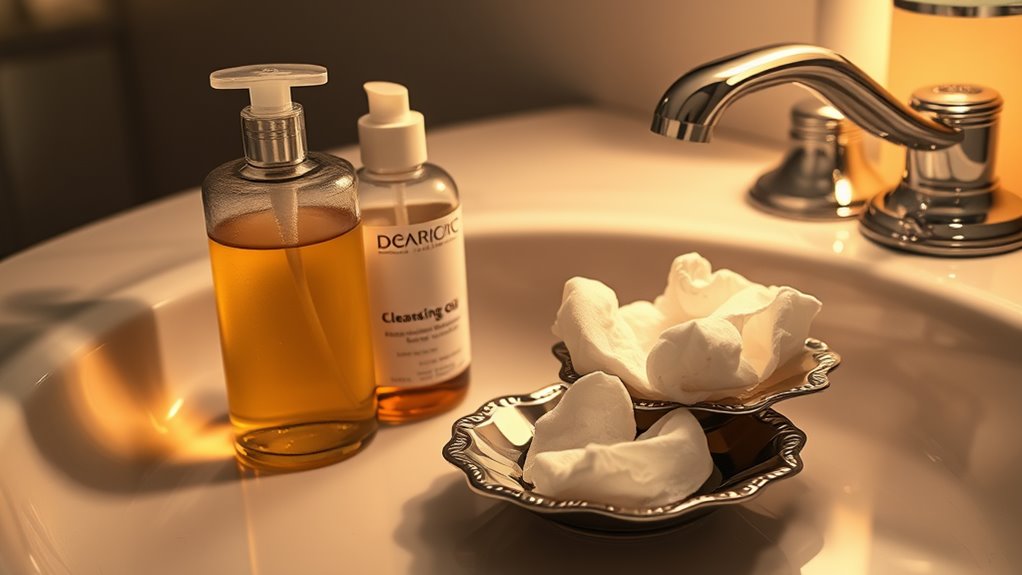Why Double Cleansing Might Be the Reason for Your Breakouts
If you’re experiencing breakouts, double cleansing could be a contributing factor. While this method aims to thoroughly remove impurities, it can also strip your skin of essential oils. This disruption may lead to excess sebum production, clogging pores and triggering acne. Additionally, using the wrong products for your skin type can exacerbate irritation. Understanding these dynamics is crucial for maintaining clear skin. Let’s explore how to refine your cleansing routine to avoid these pitfalls.
Key Takeaways
- Using harsh cleansers in double cleansing can strip natural oils, leading to overproduction of sebum and breakouts.
- Mismatched products for your skin type may irritate the skin and exacerbate existing conditions, triggering more breakouts.
- Over-cleansing can disrupt the skin’s moisture barrier, resulting in dryness and irritation that promote acne development.
- Dirty cleansing tools can introduce bacteria to the skin, increasing the likelihood of breakouts during a double cleansing routine.
- Neglecting to incorporate sun protection in your daytime cleansing products can lead to skin damage and acne flare-ups.
Understanding Double Cleansing
Double cleansing is a skincare method that involves using two different types of cleansers to effectively remove impurities from the skin.
The first cleanser, typically an oil-based formula, dissolves makeup and excess sebum, while the second, a water-based cleanser, targets remaining dirt and impurities.
A common double cleansing mistake is using harsh products that can strip your skin’s natural oils.
This may lead to irritation or breakouts.
To avoid this, choose gentle formulations appropriate for your skin type. Additionally, understanding your individual skin types can help you select the best products for your cleansing routine.
Common Mistakes in Product Selection
Here are four mistakes to avoid:
- Using Harsh Ingredients: Opt for gentle cleansers; aggressive formulas can irritate your skin.
- Ignoring Skin Type: Choose products tailored to your skin type—oily, dry, or combination.
- Overlooking pH Balance: Select cleansers with a balanced pH to maintain your skin’s natural barrier.
- Neglecting Sun Protection: Ensure your second cleanser contains sun protection if used during the day to prevent damage.
Additionally, using the wrong products can lead to worsening skin conditions that may exacerbate breakouts.
Avoid these pitfalls to enhance your double cleansing routine and prevent breakouts.
The Impact of Cleansing Techniques
Cleansing techniques play a pivotal role in maintaining skin health and preventing breakouts. Your approach to cleansing can either support your skin’s barrier or compromise it. Improper techniques can lead to irritation, excess oil production, or clogged pores, all of which contribute to breakouts. Incorporating a simple cleansing routine can dramatically transform your skin’s appearance and overall health.
| Technique | Impact on Skin |
|---|---|
| Harsh scrubbing | Increases irritation |
| Over-cleansing | Strips natural oils |
| Using dirty tools | Introduces bacteria |
| Neglecting hydration | Compromises barrier |
| Incorrect product choice | Triggers reactions |
Adjust your methods to ensure a balanced and effective cleansing routine.
Identifying Your Skin Type
Identifying your skin type is crucial for preventing breakouts.
Here are four key characteristics to consider:
-
Oily: Excess shine, enlarged pores, and frequent acne.
-
Dry: Flakiness, tightness, and irritation, especially after cleansing.
-
Combination: Oily in some areas (like the T-zone) and dry or normal elsewhere.
-
Sensitive: Reacts easily to products, resulting in redness or irritation.
Understanding these characteristics allows you to choose the right products and methods, ultimately reducing the likelihood of breakouts and enhancing your skin’s health. Additionally, your skin type can often reflect your hormonal health, which may further influence the effectiveness of your skincare routine.
How to Adjust Your Cleansing Routine
To effectively adjust your cleansing routine, first identify your skin type to tailor your approach.
Next, choose gentle ingredients that won’t irritate your skin while maintaining cleanliness.
Finally, consider adjusting your cleansing frequency based on your skin’s needs to prevent breakouts and promote balance. Incorporating gentle ingredients that specifically address oily skin can further enhance your cleansing routine.
Identify Your Skin Type
Understanding your skin type is crucial for tailoring an effective cleansing routine that minimizes breakouts.
By identifying your skin type, you can select the right products and techniques to achieve optimal results.
- Oily Skin: Look for foaming cleansers that control excess sebum.
- Dry Skin: Opt for hydrating cleansers that maintain moisture.
- Combination Skin: Use a balanced cleanser that addresses both oily and dry areas.
- Sensitive Skin: Choose non-irritating, soothing cleansers that avoid harsh ingredients.
Choose Gentle Ingredients
Selecting the right ingredients for your cleansing routine can significantly impact your skin’s health and its tendency to break out.
Opt for gentle, non-comedogenic ingredients that won’t irritate your skin.
Look for formulations with soothing agents like chamomile, aloe vera, or green tea, which can calm inflammation.
Avoid harsh sulfates and alcohols, as they can strip your skin’s natural oils and disrupt its barrier.
Instead, choose cream or oil-based cleansers that maintain hydration.
By prioritizing gentle ingredients, you’ll help prevent irritation and breakouts, ultimately promoting a clearer, healthier complexion.
Adjust Cleansing Frequency
How often should you cleanse your skin for optimal health?
Adjusting your cleansing frequency can significantly impact your skin’s condition.
Here are some guidelines to help you determine the right approach:
- Oily Skin: Cleanse twice daily to remove excess sebum and prevent breakouts.
- Dry Skin: Limit cleansing to once daily to avoid stripping natural moisture.
- Combination Skin: Tailor your routine by cleansing twice a day but using different products for each zone.
- Sensitive Skin: Cleanse once daily with a gentle formula to minimize irritation.
Monitor your skin’s response and adjust as needed for the best results.
Signs You Might Be Over-Cleansing
Are you noticing an increase in breakouts despite your diligent cleansing routine? This could signal over-cleansing. Signs include persistent dryness, irritation, or redness. If your skin feels tight or looks flaky, you might be stripping away essential oils. Additionally, frequent breakouts or an oily sheen shortly after cleansing can indicate that your skin is overcompensating for lost moisture. You may also experience a disrupted skin barrier, leading to heightened sensitivity. If you recognize these symptoms, consider reducing your cleansing frequency or switching to gentler products. Your skin may need time to recover and restore its natural balance. Remember, avoiding morning skincare mistakes can significantly improve your skin’s health and appearance.

